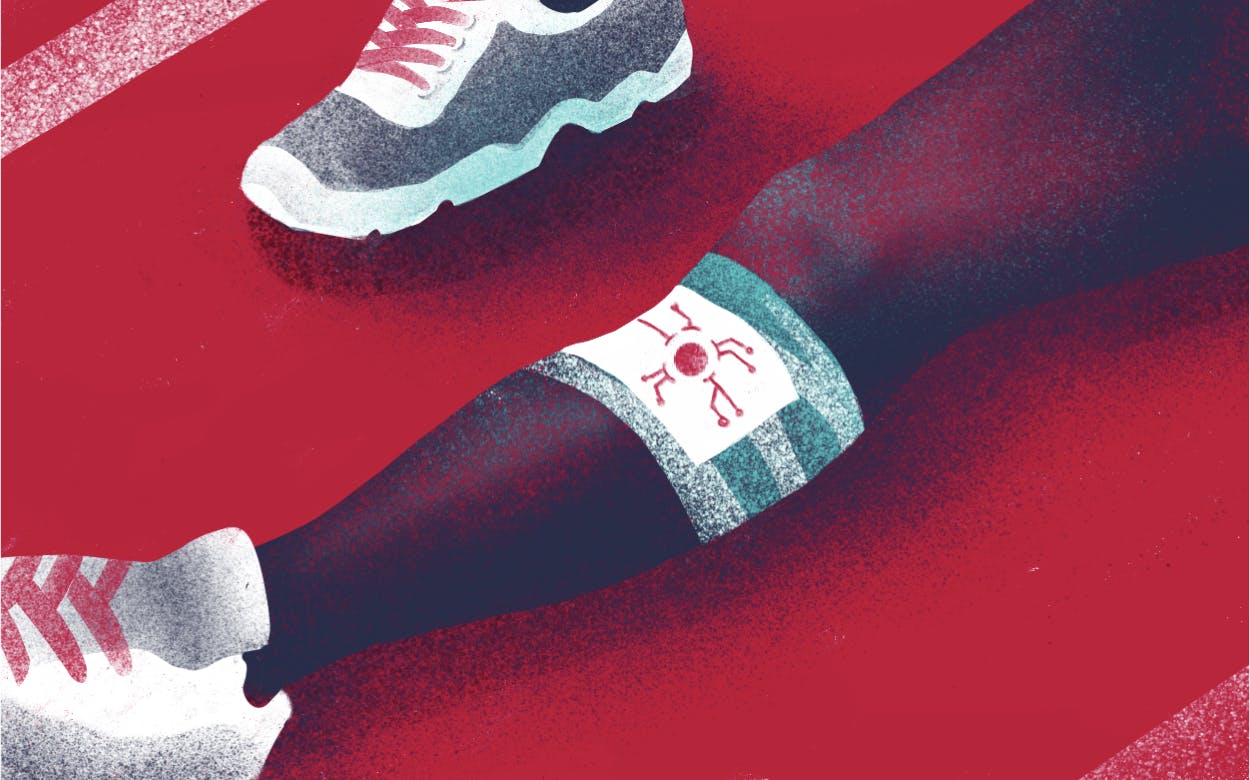Startups and researchers work on the future of wound care

We've all seen a simple everyday sore turn into a nagging long-term problem. You probably remember incidents with bandages that were applied too long or plasters that were stuck on too tightly and did not allow air to reach the wound. It's essential to care for injuries, but it can be dangerous if you don't change the dressing regularly. Startups try to change that.
Yes, it sounds like common knowledge—a banality. Partly because Hansaplast and Band-Aids can be found in every household; we all grew up with them. They are as much a part of being a child as the comfort of ice cream. But don’t forget that it wasn't so long ago that people died from everyday maladies that are unimaginable today.
Just think of Calvin Coolidge Jr., the son of the 30th U.S. President Calvin Coolidge. In summer 1924, he played tennis with his brother without wearing socks and contracted a blister. The blister developed into sepsis, and Calvin Jr. died a little more than a week later.
Medical progress
Luckily, the risk of dying from a blister is no longer high. But unfortunately, there are still exceptions. Infections are not to be trifled with. Improper wound care can still lead to serious illness. In countries where healthcare is underdeveloped, conditions caused by inadequate dressing may even still be life-threatening.
Another problem is chronic wounds. They can be insidious, even if you live in a country with a highly developed healthcare system. Over 6 million people in the United States—roughly 2% of the population—deal with chronic wounds, which amounts to an approximately $15 billion industry. Chronic wounds account for over 5% of the NHS budget. Globally, we’re talking about a $40 billion market.
Infection remains one of the most significant risks associated with chronic wounds. Even if a lot of experience has already been gained in this area, only empirical values tempt physicians to change dressings. Doctors rarely know what's brewing and growing underneath the bandages.
No one wants to experience what happened to Calvin Coolidge Jr. But if you catch a wound infection, it will spread quickly, whether you were living 100 years ago or you are alive today. Within 48 hours, the whole body can be affected. And the infection can set healing back by months.
Any therapeutic optimization and innovation that makes it easier to detect infections or even prevent them are welcome.
Sniffing out infections
At the University of Belfast, experts developed a sensor to detect developing wound infections based on CO2 concentration. Details were published in Chemical Communications.
Andrew Mills, a professor of chemistry, and his team are working on an odor sensor that can detect volatile chemicals. They recently developed an embedded CO2 detector for chronic wound dressings. The sensor changes colors when it detects rising CO2 concentrations, a telltale sign of dangerous bacterial infections.
It works similarly to food health sensors. The more carbon dioxide is detected, the redder the sensor becomes. In initial tests with animals, the sensor worked exceptionally well. The team hopes that their approach could reduce the detection of an incident from days to hours. Mills's team now hopes to partner with companies that already sell wound dressings to test the idea in human clinical trials.
Wound healing innovations
We took a look around and came across a number of other exciting innovations and startups in the field:
- Swift Medical, a Canadian startup, uses artificial intelligence to accurately measure wound circumference, type, and progress. The system also analyzes the wound, enabling wound specialists to get a comprehensive view of the wound care population.
- SweetBio, a company from Memphis, TN, United States, works on honey-incorporated absorbable membranes that combine the benefits of multiple products, enabling medical practitioners to treat wounds effectively.
- SolasCure leverages biomimicry and evidence-based medicine to develop treatments for patients with chronic wounds.
Wound care seems well-poised to become an emerging MedTech field. Hopefully, with a similar effect to those initiated by Paul Carl Beiersdorf (adhesive strip plaster) and Earle Dickson (Band-Aid).
However, what we liked most about the odor sensor mentioned above are its simple design and potential scalability. It carries the innovative light of Beiersdorf and Dickson. A cheap and easy-to-install sensor could fundamentally change the way we approach problems related to wounds in the very near future.